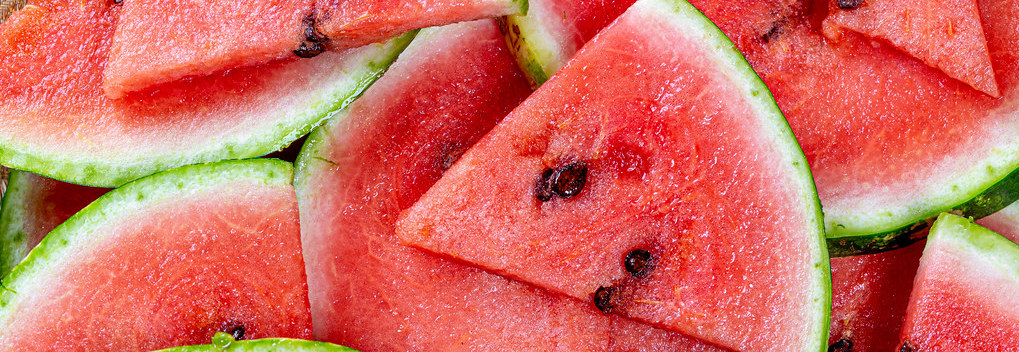Watermelon seed research grows into time-lapse polymerization patent
June 06, 2022

Watermelon seed powder, which is rich in eurease, helped establish a method for the temporal control of a polymerization process.
– "Fresh ripe watermelon slices background" by wuestenigel is licensed under CC by 2.0.
Watermelon seeds contain an abundance of natural compounds that affect germination and nutrition. One such compound is an enzyme known as urease, which caught the attention of John A. Pojman, LSU Chair of Chemistry and William and Patricia Senn, Jr. Distinguished Professor.
Pojman’s research of the urease found in watermelon seeds established a method for the temporal control of the induction period of the polymerization process, which can be programmed by the concentration of urea and urease found in watermelon seed powder.
The induction period is the time after mixing when a polymer is produced. Current systems, such as five-minute epoxy, start reacting as soon as the components are mixed. After five minutes, the system becomes hard, but the reaction is not complete for many hours afterward. Though widespread, these systems are suboptimal for materials-chemistry applications, such as adhesives, coatings and sealants, since an initial slow reaction followed by a rapid curing is preferred.
In 1995, Pojman had the idea to create a clock reaction, which allows abrupt changes in concentration to be programmed into chemical systems using urea and urease. When urea is broken down in water to produce ammonia, the enzyme urease catalyzes the process.
Since urease is most active at a neutral pH, if the liquid initially has a lower pH, the reaction is slow. As ammonia is produced, the pH begins to rise, and the reaction speeds up. Pojman explains that the pH will exhibit an abrupt increase after a period that can be adjusted according to the initial concentrations of urease and urea.
With the help of Professor Annette Taylor from the University of Sheffield in the UK, Pojman and his students created a working clock reaction in 2015. The programmable change in pH can trigger polymerizations to create adhesives or generate gels from the reaction between borate and polyvinyl alcohol, which is famously known as slime.
To make a practical system, Pojman and his student, Anthony Mai, used an inexpensive source of urease found in watermelon seeds. Pojman and Mai discovered a simple way to separate the particles from the seeds using acetone sedimentation.
The recently awarded patent [U.S. Patent No. 11186659] , entitled, “cure-on demand and time-lapse polymerization,” describes how the urea-urease reaction, catalyzed by the watermelon seed powder, can be used to create adhesives and other polymer systems whose induction period can be easily programmed by the concentration of urea and watermelon seed powder.
“We hope our systems can be used in practical applications such as industrial adhesives. Our systems avoid highly irritating chemicals that are currently in use,” said Pojman.
For more information about the Pojman research team and cure-on demand products, visit Professor Pojman’s faculty page.